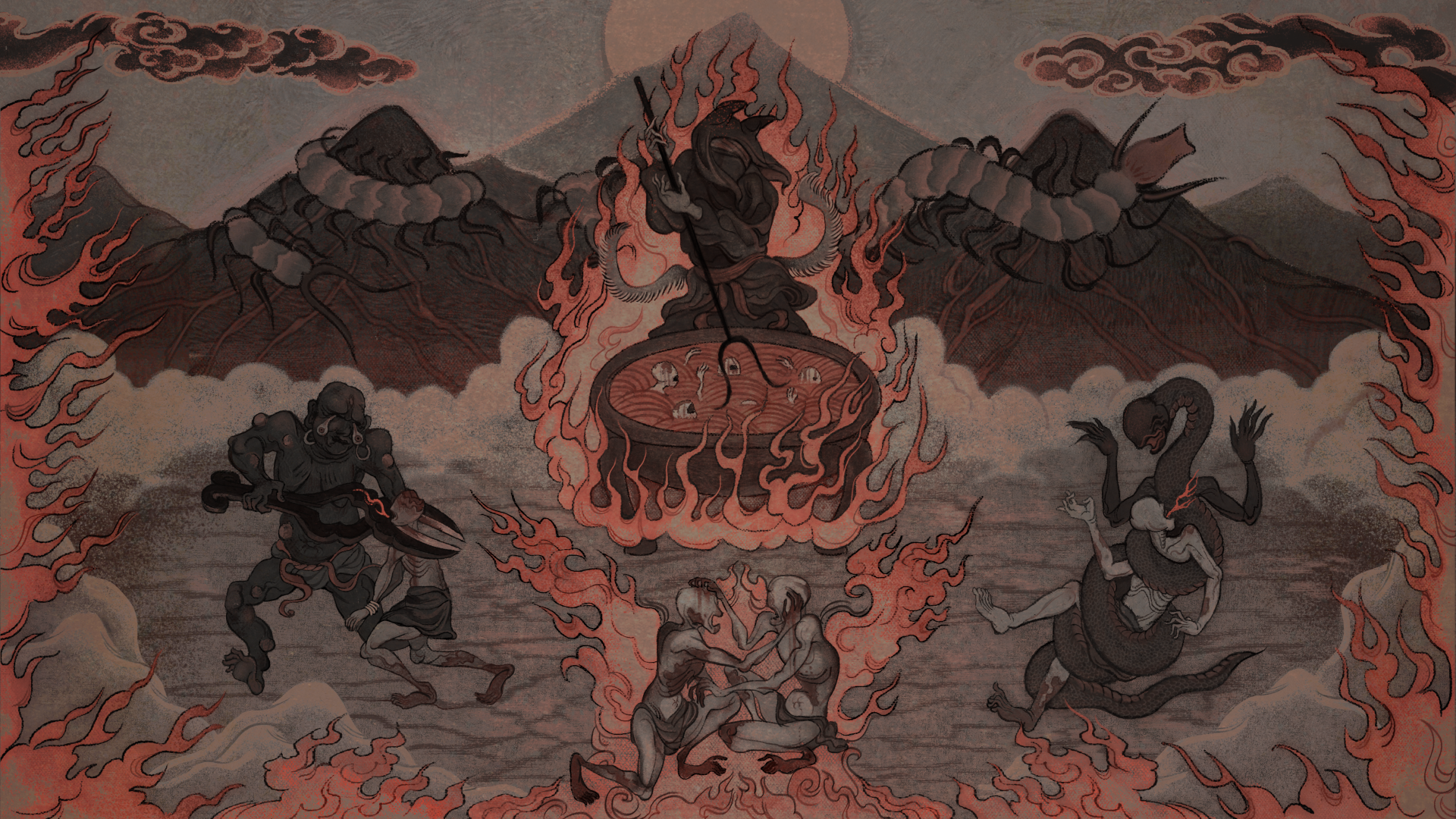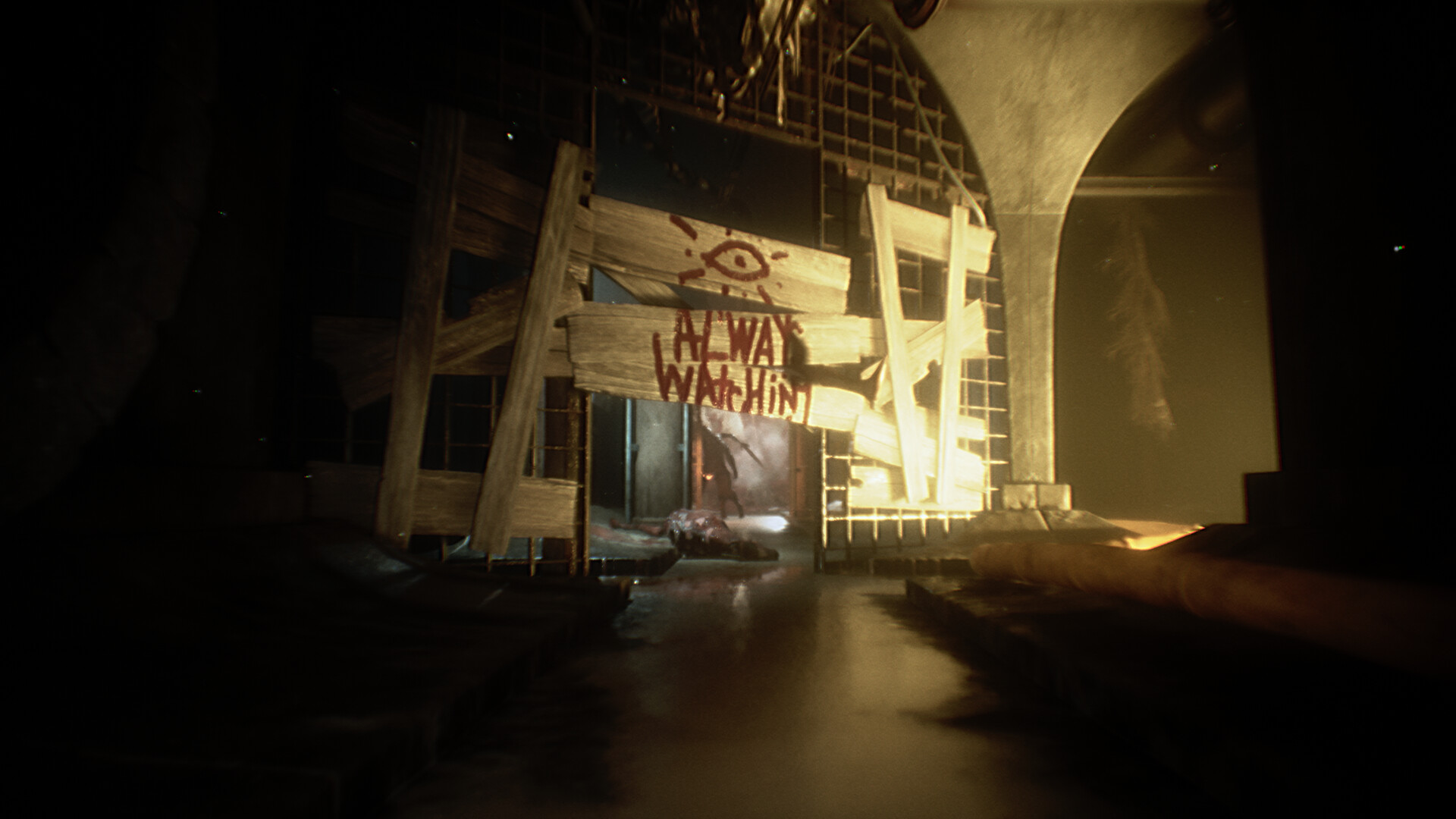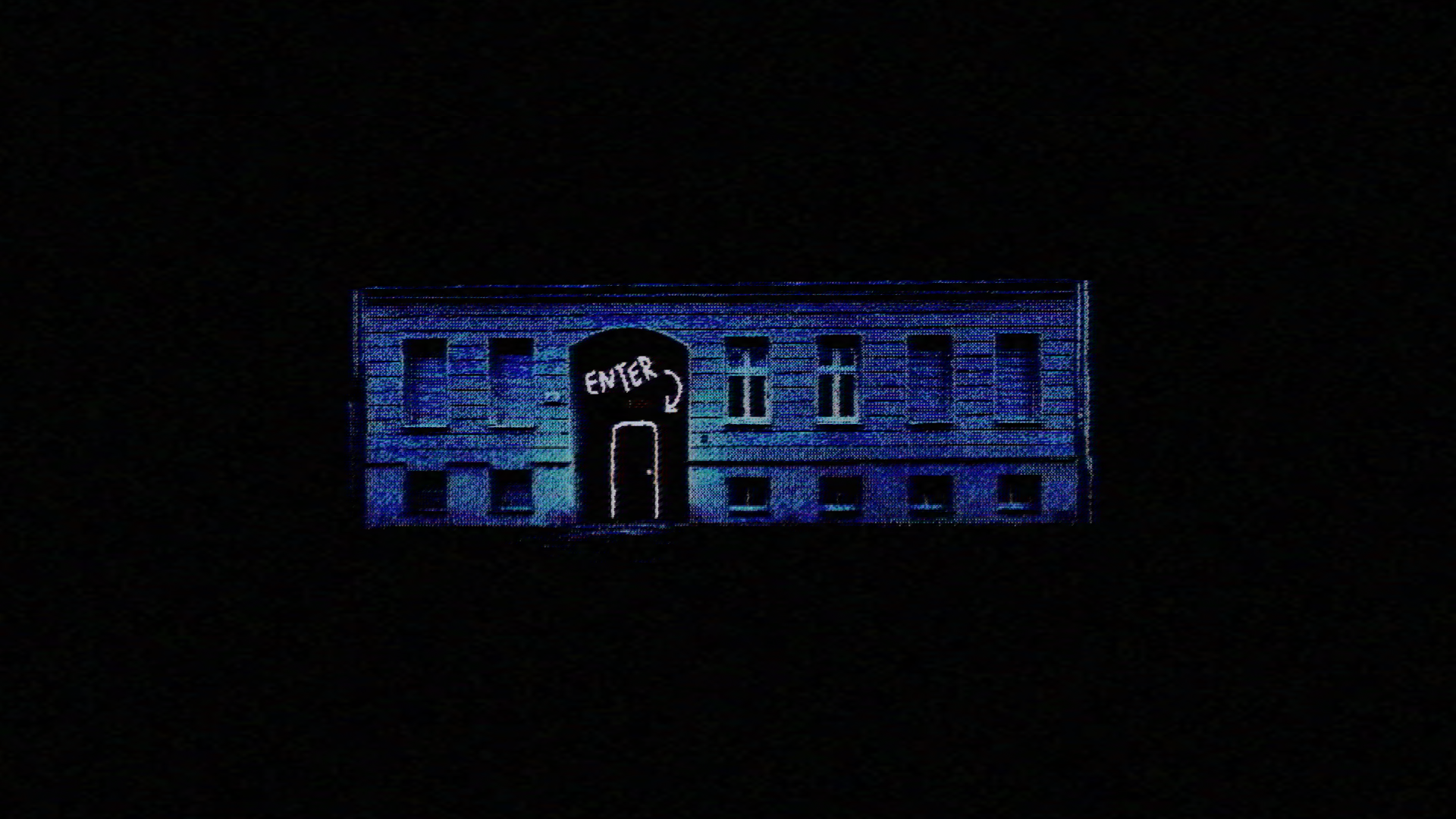
Labyrinth of the Demon King: J.R. Hudepohl Breaks the Seal on the Cursed Castle to Tell us What’s Inside
As you know, dear reader, we are in the throes of a full-blown survival horror renaissance, from single to triple A, everybody is dying to get their hands wet with blood to keep gamers scared. But while everybody has been tripping over themselves to bring back our favorite series or recreate them, J.R. Hudepohl aims to create a spiritual successor of a different kind with Labyrinth of the Demon King, taking elements from oft-underappreciated titles in horror gaming like Condemned: Criminal Origins, or King’s Field. In Labyrinth of the Demon King, the player will navigate a cursed castle in first person as they solve puzzles and face opponents in engaging melee combat.
Over the past years, we have seen the announcement and release of many remakes, spiritual successors, and sequels to many beloved series, but these titles all tend to have a similar feel. In AAA gaming, there is a wave of third person survival horror titles headed our way including remakes of Silent Hill 2 and Alone in the Dark, as well as new titles like Alan Wake II and the Callisto Protocol. Even in the indie gaming scene, there are two main camps for the types of survival horror you will typically find: first person titles inspired by slasher movies, like Stay out of the House, or fixed camera titles reminiscent of the classic Silent Hill and Resident Evil titles, such as Tormented Souls. This is why I am so excited to see Labyrinth of the Demon King bring something new to the table with its medieval Japanese setting and emphasis on control and composure during combat.
I reached out to J.R. to see if he would be interested in making time to speak about his upcoming title, the work he had put into it, and the future of its development now that he had been picked up by Top Hat Studios for publishing. Thankfully he was able to take time away from crafting haunted hallways and serene tea ceremonies to have a conversation with me, so after exchanging a brief introduction and thanking him again for making time, I dove into the interview to learn more about the historically-influenced horror show he was building.
Getting things started, I wanted to know where the inspiration for the title had come from, so I asked J.R. how he came to decide on the setting and story for the game, had he been dead set on making a game set during the age of samurai, or was that something that came about later in development?
J.R. Hudepohl: So back in 2020 I was planning a trip to China, but then, of course, Covid hit, so I had to go to Japan instead, and when in Japan I went to this island called Kitagi Island, and when I was there it was like the middle of winter so there wasn’t a lot of people there, it kind of looked a little bit run down, almost abandoned, and the buildings there, and the atmosphere kind of gave me an idea that it would be a really good place for a horror game. So when I got back to New Zealand I started off with an idea that was kind of like a modern day game, like Silent Hill in the 90s in Japan. So I started working on that and at some point I started reading up on different myths and things like that. So the story of Shuten-dōji and how he was slayed inspired me to change the entire game there to where it is today, which is the guy hunting down and killing the demon king. Any of those are like the main inspiration for the game.


Aside from the historic and thematic inspirations for the title, there were a lot of interesting encounters and gameplay mechanics being shown, so I followed up by asking J.R. what games had helped shape Labyrinth of the Demon King?
J.R.: Visual-wise like Silent Hill is the main one… also Fatal Frame 2 is a big one for making the abandoned Japanese town. Onimusha is too for the props and castles and things like that. Gameplay wise, Condemned: Criminal Origins is a main one for the combat, Resident Evil for puzzles and things like that and then King’s Field and Shadow Tower would be the others
When J.R. mentioned Shadow Tower I commented that it was exciting to hear him say that, as a fan of the game myself, I find it does not get the recognition it deserves.
J.R.: Yeah, originally it was just King’s Field that was the inspiration. But in this article about my game that was published in Japan one of the comments mentioned Shadow Tower so I looked it up and the more I looked at that game, I was like “aw yeah this is pretty cool” and got to be more inspired by it
I followed up by saying that it made sense to hear that these first person titles were so inspirational, as the combat in Labyrinth of the Demon King seems to have a satisfying weight behind each blow that really gives the fights more impact.
J.R.: Yeah, I like the combat where you’re kind of fighting for your life… The slower paced combat can be really satisfying.


On the topic of combat, which allows the player to attack, block, and even kick their opponent, I wanted to know how J.R. was trying to balance the encounters to ensure that the player was never given a distinct advantage due to their combat prowess. So I asked J.R. what his design philosophy was when it came to creating these enemy patterns and encounters?
J.R.: You have to make sure you’re watching your enemy and timing your blocks and things like that correctly… your enemies can do things like faint attacks and with their hit reactions, they can spin around and whack you in the back and that kind of thing. So you’ve kind of got to keep an eye on things and make sure you don’t just zone out, otherwise you can get killed very quickly. Also, there’s other enemies, things like the Nuribotoke that can’t be killed with a sword or a bow. You have to figure out a way to beat them by searching the environment, and finding clues on how to do that. Most enemies will gang up on you as well.
With so many enemies in the game being based on the myths surrounding yokai, I was curious if knowledgeable players would have an advantage, so I asked J.R. if the legends and folklore surrounding these yokai could be used to defeat them in the game?
J.R.: In a way I suppose, with the way I am inspired by the myths of the yokai, I guess most of the stuff is made up for the game regarding that. I don’t even want to go into too much detail about how to defeat the yokai. But yeah, there’s elements of the myths and things like that.


Something I had seen in the game was a full tea ceremony wherein the player would go through the entire process of making a cup of matcha tea to restore health in the safe room. Wanting to know more, I asked J.R. if there would be multiple tea rooms in multiple safe rooms, or was that a unique instance in the game?
J.R.: So right now, the way the way the game is structured is that there’s the courtyard between all the different Towers, and that’s kind of where that safe room is, so there is really one safe room, but if I do add more I want to try to think of a different ceremony, or something you could do in the safe room to restore their health or something. But yeah there’s kind of like a hub where you have a merchant, and the tea ceremony where you can restore your health, there’s also another area in there where you can practice your combat skills, like a dojo.
On the topic of the merchant and the other NPCs shown in trailers and such, I asked J.R. if the player should expect to meet many other people in the Labyrinth of the Demon King?
J.R.: Those are like the main two that you interact with. I think, yeah there’s not really a lot of friendly people out there, most of them are out to kill you. It’s kind of like Silent Hill, in that there’s only a couple of people you’ll meet.


While looking into the title, I had seen that J.R. had recently had Labyrinth of the Demon King plucked up by Top Hat Studios, knowing that having a publisher can be a massive help to indie devs, I asked J.R. how it felt to get taken on by the studio, and how they had helped him out so far?
J.R.: Yeah, it was pretty cool. Because I was actually already following a couple of games by the publisher, Frogun and Peripeteia. So when they reached out, it was like, “Oh, that’s cool. I like them.” They’re going to handle all of the console ports and the physical copies of the game. I wouldn’t really know how to do any of that stuff. They also got the game into Realms Deep like, two weeks ago, which was cool, because it boosted the wishlists massively.
I was happy to hear that Top Hat Studios was going to be helping to put the game in front of more players. With that in mind, I asked J.R., since the game is so steeped in Japanese history and folklore, is there anything that the more culturally-oblivious gamers like myself could learn from this game?
J.R.: Yeah I mean you should learn quite a lot about the different yokai, there’s some obscure ones in there. And also Buddhist mythology, by reading different texts and things like that in the game, solving puzzles and all that, there’s a bit to learn about.


J.R. had mentioned the puzzles in Labyrinth of the Demon King a few times in our interview, so I asked him if he could tell us more about types of puzzles players should expect to find in the game, and how often will they come across them?
J.R.: Yeah, let’s see, It’s kind of like the puzzles are the same way as like your Silent Hills or your Resident Evils where it’s kind of like a lot of exploring and you’ll come across a puzzle that unlocks a key or a door or things like that. Yeah, so maybe like, like 75% exploration and combat, and then 25% puzzles.
The game looked like it had a lot going on behind the scenes, but it can be hard to tell how far along a game is just from screenshots and trailers alone, so I asked J.R. if he felt like he was making good progress on the game, and if he could throw out a percentage that he felt he had completed on the title?
J.R.: Let’s see. It’s kind of hard to say, I’m not too sure, I couldn’t give an exact number on that one. It’s coming along, I’m making a lot of progress now. Like, right now what I’m doing is just going through the demos, and making them look a lot nicer, like yeah, let me show you the video real quick of what the game used to look like. And then you can compare that to what you’ve seen now. And then you’ll see this video shows what the game used to look like back in 2021. This is like the castle exterior… I’ve definitely changed a lot.


And with that I wrapped up the interview, thanking J.R again for taking time to talk about Labyrinth of the Demon King and the work involved in its production. If you want to see what horrors lie within the halls of the demon lord then be sure to wishlist the title on Steam so you can grab it as soon as it launches.
In the interim, to stay up to date on details of the title, be sure to follow J.R. Hudepohl on his personal twitter to see the latest updates as he develops the title. And as always, if you are absolutely fiending for the latest and greatest in gruesome, gory gaming, then head back to DreadXP and read more of our frightful features!




